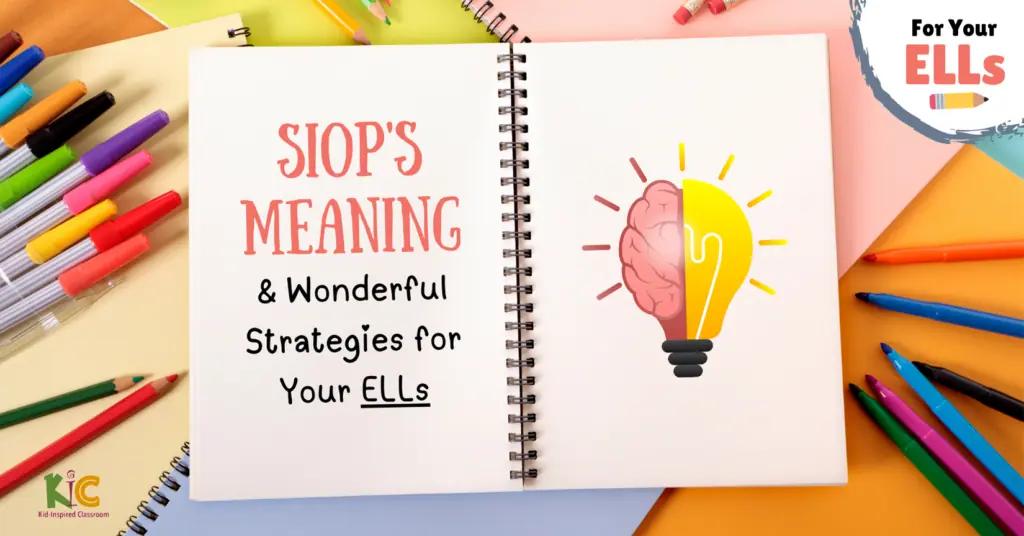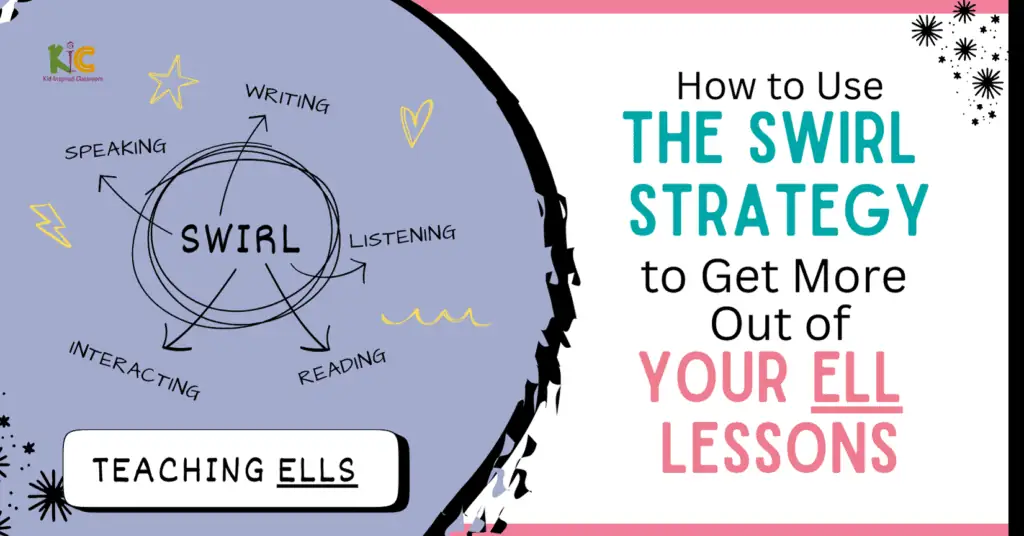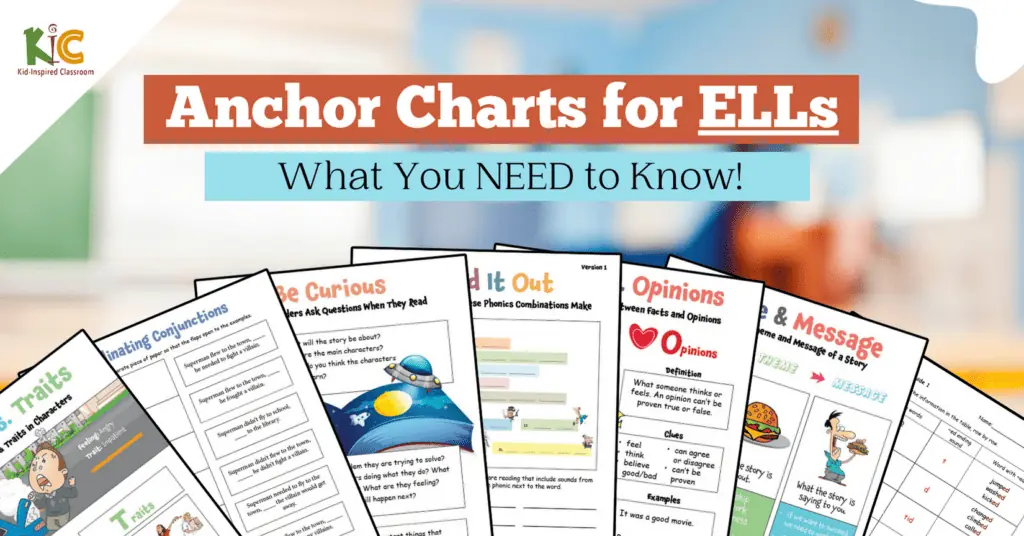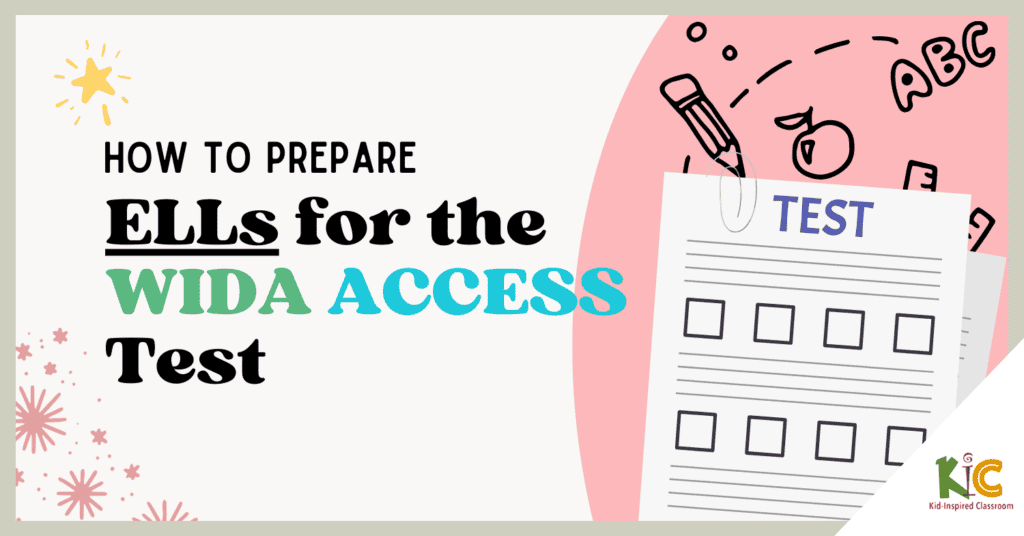
Want to better prepare your ELLs for the WIDA ACCESS test?
You’re in the right place!
Every year, ELL teachers in WIDA states are faced with the monumental challenge of preparing for and administering the WIDA ACCESS test.
If you’re in a WIDA state, you don’t need me to tell you that it can be a stressful time.
Not only…
…do you have to work out the logistics of testing all of the ELLs you’re responsible for…
BUT…
…you also have to worry about how well they’re going to do on the assessment.
There are 2 major factors affecting how well your students will do on the WIDA ACCESS test:
- Student Content Knowledge and Academic Skills
- Student Familiarity with the Testing Platform and Format
Below, I’ve provided some resources and strategies for you to use with your students to help them out in both of these areas.
The WIDA ACCESS Test – A Little Perspective
First…
Let’s try to get a little perspective.
The WIDA ACCESS test is just a tool to see where your students are in relation to their grade level. It provides a ton of great information that you and their content teachers can use to better tailor teaching methods to meet their needs.
There is only so much you can do to prepare students before the test.
How well they are going to do is ultimately going to come down to how well they’ve been doing throughout the year.
Students improve with:
- Consistent practice
- In each language domain
- Over time.
Don’t try to cram.
You’ll only stress you and your students out and they will likely do less well than they would have if you helped them relax and focus.
If students haven’t been challenged consistently throughout the year, trying to cram everything in at the last minute is not going to get them there. Better to see how the results turn out, take a step back, and consider carefully how we can begin creating consistent practice over the course of the following year.
Low-Hanging Fruit of the WIDA ACCESS Test
Alright…
Now that we have some perspective, let’s pluck some of the low-hanging fruit, so to speak.
Let’s start with preparing students for the WIDA ACCESS test platform and format.
Many ELLs don’t do as well as they could, not because of the content or the questions, but because they are thrown off by the format of the test itself.
We don’t want our ELLs expending their mental energy trying to figure how to use the computer or respond to a question, we want them to focus on the content of the test itself.
This is why you want to have your ELLs do practices that are similar in format to the WIDA ACCESS test format.
There are 2 parts to this:
- The Testing Hardware
- The Testing Format & Software
- Accommodations
Testing Hardware
What hardware are the students using for the ACCESS test? Have them practice using the computers or devices that they will be using for the test beforehand.
Are there headphones, a microphone, a mouse, a keyboard, buttons to click on?
Give your ELLs the opportunity to engage with all of these things before test day.
Do students know how to make capital letters & other punctuation on the keyboard they will be using? Practice!
One teacher in our Engaging ELLs Facebook group recommended getting dividers to put between students. This helped students to feel much less nervous while talking during the test.
Testing Format & Software
The testing interface is another important factor that can affect student outcomes. How do students make selections, proceed forward, go back, record audio, etc?
What kinds of questions are there and how difficult are those questions going to be?
How can I read carefully, make thoughtful decisions, and avoid second-guessing myself?
There are lots of good resources out there for practicing. Try to find example tests at the grade level your students are at so that they have a good idea of the difficulty level of the questions. You can find some practice tests from WIDA here. There are also some example tests here. There are some resources from Michigan here.
Also, practice the vocabulary for interacting with the computer and software so that they can read and understand instructions about them.
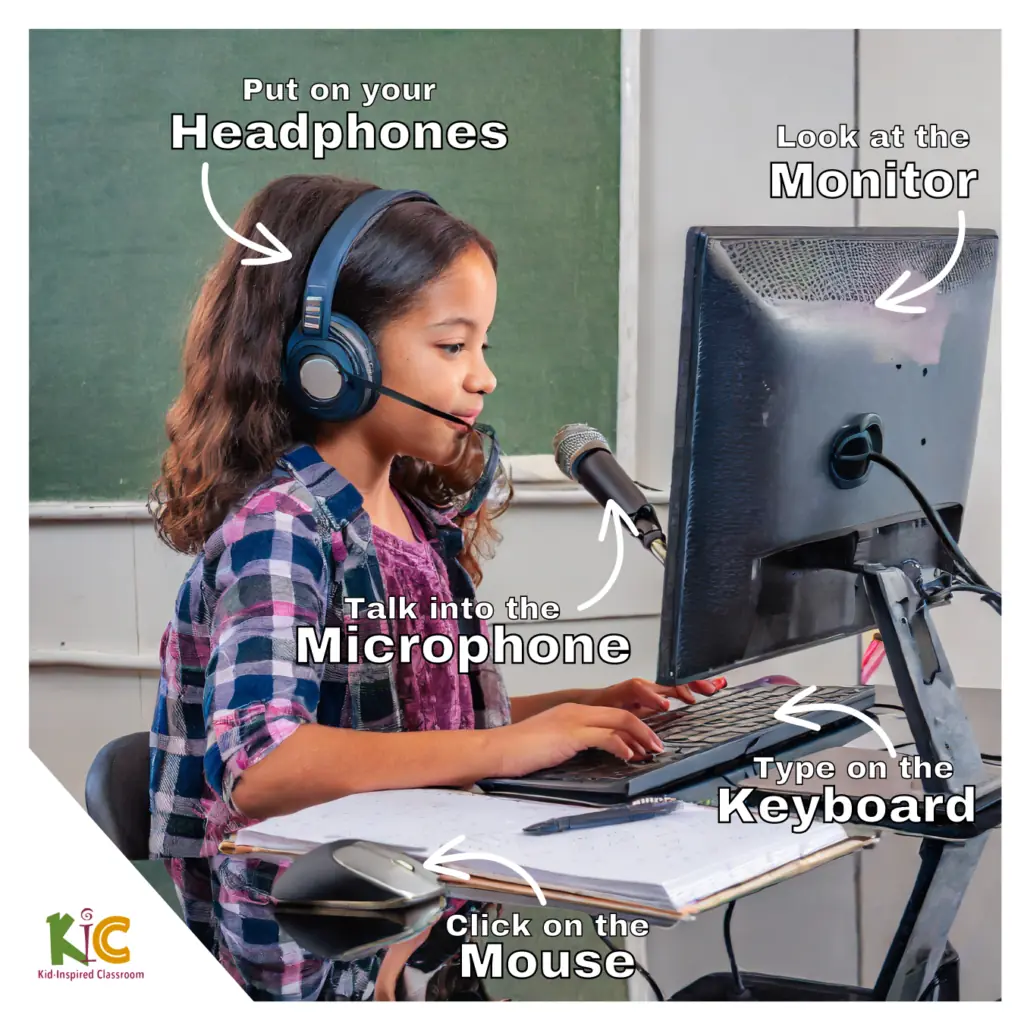
Here are a few examples of common computer assessment vocabulary:
- click
- button
- mouse
- headphones
- keyboard
- type
- microphone
Bonus Tip: Practice test-taking strategies. Teach test-taking strategies, such as skimming passages for main ideas, using context clues, and managing time effectively. These skills are valuable not only for the WIDA ACCESS test but also for future academic assessments.
Write as much as you can and don’t worry about making mistakes.
Consistent Practice in Each Language Domain Over Time
If…
you’ve picked the low-hanging fruit already (see above), then it’s time to settle into some good routines.
Yes…
You can use the strategies below in preparation for your students’ WIDA testing.
No…
The strategies below may not have immediate results for students taking the WIDA ACCESS test next week, but if you stick with these strategies over time, your students will see serious results.
The key, similar to investing money, is not to panic and lose your head, jumping from strategy to strategy, or trying to information dump on them each time you see them.
Here are some helpful strategies for preparing your ELLs for the WIDA ACCESS throughout the year.
(P.S. Also see the Providing Accommodations section below. I gave it its own section since it’s such a big topic.)
(P.S.S. Yes, I understand I used P.S. wrong but I thought it was cute here. I also thought about using Pssst, but that seemed a little too silly. If you have any suggestions for making blog articles fun, you can let me know in the comments.)
- Create a positive, encouraging, and supportive environment: If you’ve never learned another language before, it may be difficult to understand how nerve-racking, tiring, and uncomfortable it can be at times. Just when students need to put themselves out there and take risks with the language, they often feel like closing up, shutting down, and just observing. When you create a supportive classroom environment where students feel comfortable taking risks with language, good things can happen. Celebrate their attempts, create good feelings around using the language, and correct intentionally. Students are going to make mistakes and correcting absolutely everything they say or write is not only frustrating for them but time-consuming for you. When students make mistakes in speaking that you can easily correct, simply say back to them what it is they should say and have them repeat it. Then celebrate the correct answer. Fast, simple, low pressure.
- Practice all language domains every lesson. Start with speaking & listening using vocabulary & concepts and move to reading & writing. Students have a much easier time reading and writing on topics they have already engaged with verbally.
- Spend more time on reading & writing. The weighting of the WIDA ACCESS test is 35% for reading, 35% writing, 15% speaking, & 15% listening. You can organize your lessons to practice in the same percentages. That said, don’t skimp on the speaking. Having students speak/discuss what they are going to write before they start writing helps them organize their thoughts and vocabulary before having to worry about decoding & spelling and the finality of putting something on paper.
- Stop talking so much. Your students are the ones who need to practice, not you. When you spend most of the time speaking, the stronger students do fine, but they would have done fine regardless; the weaker students lose you about 5 minutes in and never recover. When you turn it over to the students with the goal of getting All Students Practicing All the Time, all your students will improve.
- Develop Academic Language. Reading passages and tests in school often use words that aren’t used as often in everyday speech. Students can be excellent conversationalists in English but struggle enormously with classroom texts and tests. These students often trick their teachers into thinking they are fluent when they aren’t. When you explicitly teach academic language necessary for understanding classroom questions as well as complex texts and concepts, ELLs are much better equipped to access school content. This includes vocabulary, sentence structures, and paragraph structures.
- Collaborate with Colleagues. You are not an island, or at least you shouldn’t have to be. I have seen and heard many times over that not all schools or content teachers are as supportive as they should be when it comes to their English learners. That said, to the best of your ability, work collaboratively with the other educators and admin in your school. This collaboration can have a huge impact on English learners’ improvement since it builds consistency, support, and understanding across all classes.
- Utilize Technology But Do So Intentionally: Educational apps, language learning software, and online resources can provide engaging and interactive ways for students to practice English skills. But BE CAREFUL. These tools can also inhibit students’ learning and waste loads of precious time. Translation tools, for instance, can be a very helpful, but students can easily come to over-rely on them. If students are engaging with both English and their home language, that’s a good thing. If students are engaging with their home language to the exception of English, that can inhibit their ability to improve in English. If students are playing a fun educational game that requires very little of them academically, they are not going to make many gains in the time they spend playing it. It can be tempting to over-utilize these kinds of games since the students are kept busy and happy. Come WIDA ACCESS time though, neither the student nor you will likely feel so happy.
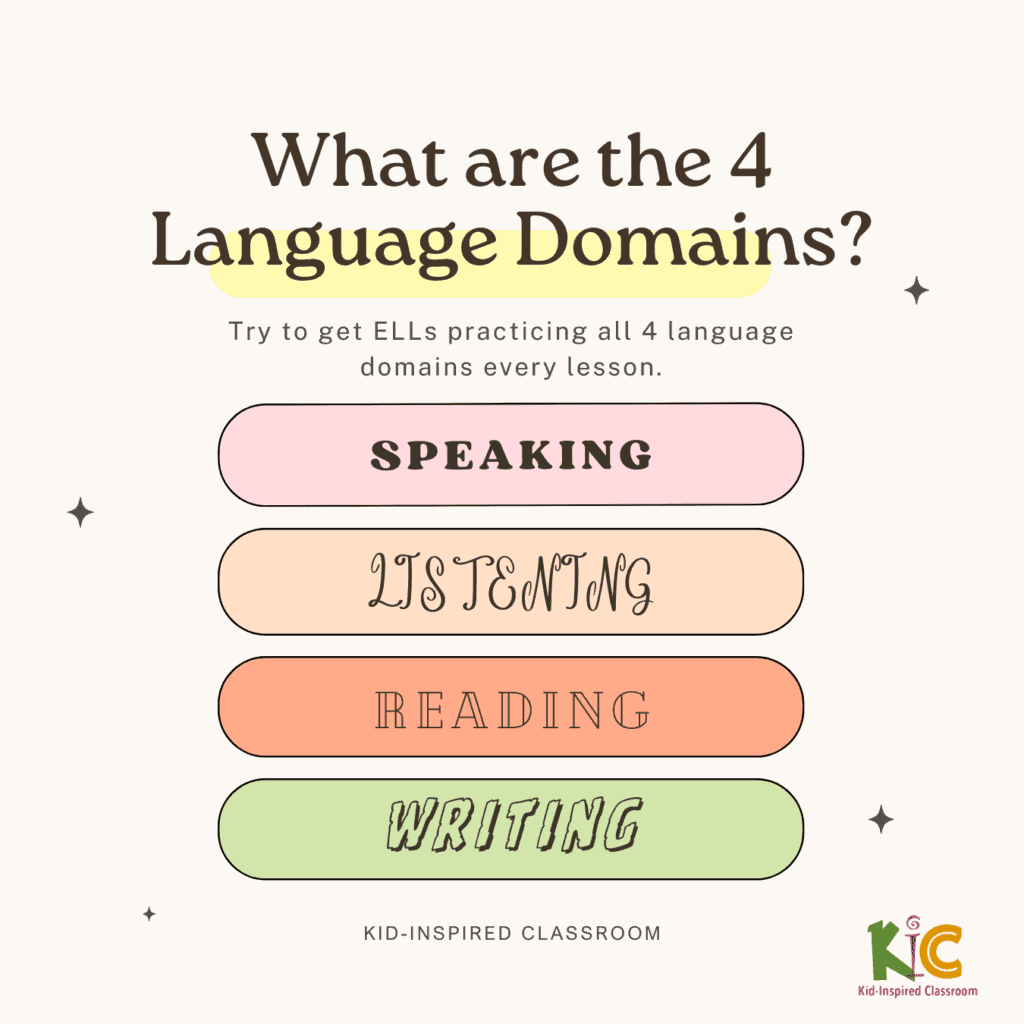
Providing Accommodations
This falls under the category of supporting your ELLs throughout the year and it is a big one.
Accommodations are often a legal right of students. You are not pampering them by providing accommodations; you’re supporting their access to grade-level content.
There is a long list of accommodations that can be provided. Here are some examples:
- Bilingual Dictionaries – Word to Word Translation Dictionaries.
- Speaking Speed and Clarity – Slow down and pronounce each word succinctly and clearly.
- Time – Provide students with some extra time to think before asking for a response or requiring a student to complete an assignment.
- Visuals – Find images, videos, realia, anything that will help tie vocabulary, concepts, stories, etc to real things students can visually understand.
- Scaffolds – There are a number of scaffolds you can use with your students like graphic organizers or anchor charts, check out this article for more ->
- Translation – Oral translation, direct translation, literary translations, all can be helpful tools for assisting your English Language Learners
- Assign a Friend – Pair students with native speakers or with another student who speaks the same language for help and/or discussion when wrestling with a text or completing an assignment.
For a full list of accommodations that’s downloadable, check out this article ->
Resources for WIDA ACCESS
– Proficiency Score Calculator for the Paper & Pencil Version
If you administer the paper and pencil version, there is a cool calculator on the WIDA site where you can calculate the scores. You can find it here ->
– WIDA ACCESS Practice Tests
You can find some practice tests for different grade clusters on the WIDA site. Here is the link ->
– Kid-Inspired ESL Curriculum Membership
The Kid-Inspired ESL Curriculum Membership has a dedicated WIDA ACCESS resource area with loads of helpful resources you can use both in preparation for the WIDA ACCESS test and throughout the year to teach & support your ELLs.
Settle In, Find a Groove, & Be Open to Letting the Results Inform How You Teach
You have to use a language in order to improve and that takes time.
You also get better at what you practice. If you only practice listening (if your teacher talks the whole time, for instance), listening will improve while other domains lag behind.
Settle in to the long-term consistent routines that are going to give you great results, regardless of whether they will affect the outcome of near-term test results.
What did you like in this article? What did I miss?
Tell me in the comments below!
